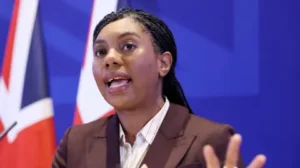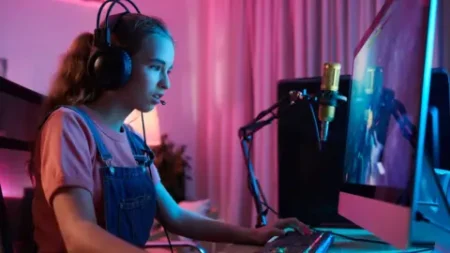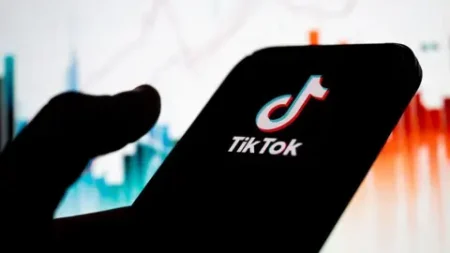**Call for Ban on AI Apps Creating Inappropriate Images of Minors**
The ongoing discourse surrounding children’s safety in the digital age has gained new urgency, as calls grow louder for the prohibition of artificial intelligence (AI) applications that generate sexually explicit images of minors. Dame Rachel de Souza, the Children’s Commissioner for England, has emerged as a leading advocate for a total ban on such AI-powered tools that facilitate the manipulation of genuine photographs, commonly referred to as “nudification.” This technique enables the digital alteration of images to present individuals, including children, in compromising or indecent scenarios. De Souza stresses the critical need for governmental action, asserting that these applications are currently operating without sufficient oversight and pose serious real-world dangers.
In response to these alarming developments, a government spokesperson publicly reiterated that child sexual abuse material is forbidden by law. Moreover, there are intentions to enhance regulations concerning the creation, possession, and distribution of AI technologies specifically designed to produce such illicit content. The intent behind these measures is to create a safer online environment, particularly for younger users who may be disproportionately targeted by these AI tools.
An essential aspect of the current issue includes the surge in the production of deepfake material—images and videos synthesized to appear authentic. According to a report released recently, Dame Rachel highlighted that the broad proliferation of these technologies serves to target girls and young women predominantly. Several applications appear to be disproportionately developed for the manipulation of female images, compounding the problem for young girls navigating online platforms. The report indicates that many young girls are opting to avoid sharing their images online, akin to offline safety precautions such as avoiding dark streets at night.
Dame Rachel emphasized the pervasive fear felt by children regarding online interactions, noting their concerns that someone—be it a stranger or even a fellow student—could exploit easily accessible software prevalent across social media channels and search engines. The rapid evolution of these digital tools raises significant concerns, as they can impose harmful influences on the lives of young persons. The Children’s Commissioner articulated the urgency of the situation, stating, “We cannot sit back and allow these bespoke AI apps to have such a dangerous hold over children’s lives.”
Legal frameworks are in place that criminalizes the sharing or threat of sharing explicit deepfake content; recent announcements from the government indicated moves towards further legislation aimed at curtailing the creation of sexually abusive images generated by AI. However, Dame Rachel argues that these existing measures do not go far enough, advocating for a complete prohibition on apps that enact nudification rather than merely focusing on those classified within the spectrum of child sexual abuse generators.
In a separate context, the Internet Watch Foundation (IWF), a charity based in the UK and partially funded by technology firms, reported a staggering 380% increase in verified cases of AI-generated child sexual abuse materials compared to previous years. This statistic starkly illustrates the urgent need for regulatory reform, particularly in educational institutions where misuse is becoming increasingly common.
The UK government is among the pioneers globally in implementing elevated offences against AI-generated child abuse, categorizing it as illegal to manufacture or distribute specific technological tools used to create such detrimental content. Additionally, Dame Rachel has put forth several recommendations to the government, including enforcing legal responsibilities on AI developers to assess their products’ risks to children, systematically removing explicit deepfake images from the internet, and acknowledging deepfake sexual abuse as a form of violence against women and girls.
Furthermore, major figures like Paul Whiteman, General Secretary of the National Association of Head Teachers (NAHT), have echoed the concerns of the Commissioner, suggesting that there is a pressing need for a review of the situation, as technological advancements often advance more swiftly than the associated legal frameworks. In conjunction with this, the media regulator Ofcom recently finalized its Children’s Code, introducing legal requirements on platforms to provide greater protection against harmful content.
In conclusion, the proactive stance by Dame Rachel de Souza and various stakeholders marks a pivotal moment in the quest to safeguard children against the incessant threats posed by AI technologies. As deliberations ensue, it is crucial that the conversation remains centered on sufficient protective measures and comprehensive legal reforms to ensure that the digital landscape becomes a safer space for children worldwide.











